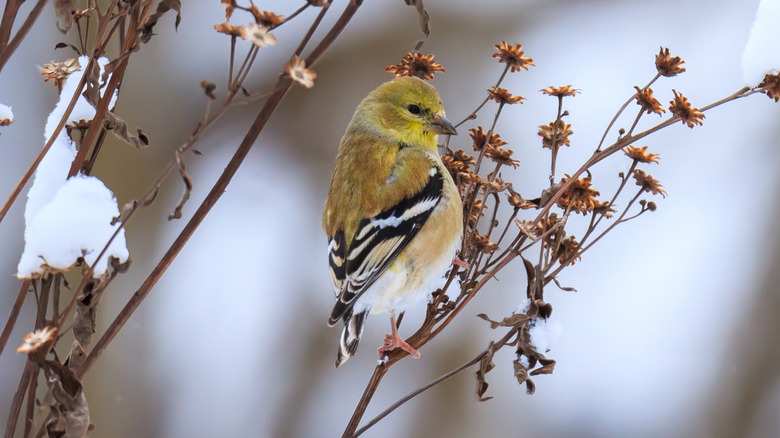Leave Your Dead Aster Flowers Out Over Winter: The Birds Will Thank You
When you tidy your garden in preparation for winter, there's one item you should avoid doing if you want to attract beautiful birds to your garden during the colder months: Pruning back certain perennial plants such as asters (Aster spp.). Birds use dead aster flowers as a source of food in the winter, so they'll appreciate it if you pass by those fall blooming plants with your garden pruners. Asters are one of the perennial plants that attract birds to your yard, and they're equally loved by pollinators including fireflies. In addition to providing food for our feathered friends, leaving spent vegetation from asters can provide important overwintering habitats for butterflies and bees.
If dead aster flowers are standing in your garden all winter long, you'll spot winged visitors, perched on the stems, devouring the seeds from the spent blooms. Some types of aster species that birds will seek out as winter food sources include great asters (Aster grandifloras), smooth asters (Aster laevis), New England asters (Aster novae-anlgiae), and showy asters (Aster spectabilis). Grow these in your yard with other native plants, and many types of birds will thank you for the feast.
Types of birds that love aster seeds & how to attract more of them
Once you start embracing this tip for attracting a more diverse variety of birds to your yard, one of the feathered visitors you'll notice will be goldfinches. Goldfinches will seek out dead aster flowers for sustenance since seeds from the sunflower family are their main source of food. Other types of finches will thank you for leaving those seed heads alone as well, including house finches, purple finches, and Cassin's finches. You also might catch glimpses of cardinals, chickadees, pine siskins, buntings, and sparrows feeding on aster seeds during the winter.
Leaving dead aster flowers standing for your feathered guests is a great first step, but there are additional ways to attract birds to your yard during the winter season. Grow other seed-producing perennials as nature-made bird food for the cold months, such as coneflowers (Echinacea spp.), goldenrod (Solidago spp.), and sunflowers (Helianthus spp.). Wildlife will also thank you if you have conifers in your yard, which can provide shelter. Meanwhile, winter-berry producers like sumac bushes (Rhus spp.) provide an alternate food source for birds like chickadees that eat berries as well as seeds.

